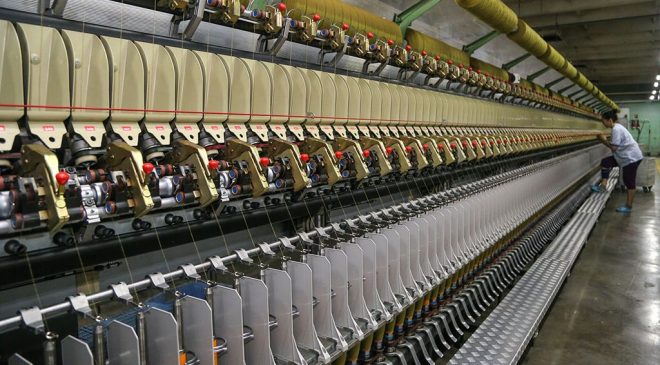
ADB’s interactive mapping tool for supply chains now covers 34 items, including vaccines.
When COVID-19 (coronavirus) pandemic hit, factories closed, and travel was halted. However, demand rose for items like surgical masks and personal protective equipment from the People’s Republic of China, some companies like Green Anchor Group thought there was something he and his team could contribute, given their experience scouring the country for supplies.
Staff at Mario Dimitri’s trading company Green Anchor Group used to spend much of their time on the road, moving from city to city and factory to factory, searching for companies in the PRC that make the machinery and other heavy industry products needed by their international clients.
Since he started the company in 2004, that was the way things worked. The internet made the search a bit easier, but Dimitri, Green Anchor’s managing director, says finding the right company making the right product meant a lot of on-the-ground detective work.
According to Dimitri, the company needed a reliable list of potential companies who might be able to supply what they wanted, with contact details and other key information they could use.
Mapping tool shines a spotlight
That’s where the Asian Development Bank’s (ADB) ] supply chain mapping tool came in. Dimitri found it while searching the internet shortly after the tool went live in May last year.
Staff at ADB’s Trade and Supply Chain Finance Program (TSCFP) first identified the need for such a tool when it became clear that supply chain problems were hindering global procurement of key medical products at the start of the pandemic.
“When we heard about the issues with the supply chains, we started asking our bank partners which companies in their portfolios were involved in the supply chains for these products,” said TSCFP’s head Steven Beck. “The idea was that we could help shine a spotlight and get help to where it was needed.”
But as it turned out, that information was not available. Even the banks didn’t have a clear picture of whether the companies they worked with were involved in the supply lines.
“That kind of information wasn’t available in a way that would make it easy for someone to address problems that might arise,” said Beck. “We decided to see if that was something we could do.”
The solution was the creation of an interactive mapping tool for the supply chains of products vital to those on the frontlines of the COVID-19 battle to allow governments, banks, investors, healthcare professionals, and firms like Green Anchor to trace the companies that make every component in these products, down to the metal and rubber that goes into each part.
Information on who makes which part for which product was available in piecemeal fashion before the ADB effort. But it had never been brought together in one database that would allow a quick search.
The TSCFP was in a prime position—firstly to understand the problem and then to act on it.
Helping companies set up PPE supply chains
In the first few months, around 10,000 visits were made to the ADB website hosting the mapping tool. Anyone can use the to, free of charge, to search a database of 47,000 companies involved in supply chains around the world.
Big international banks found they could use the ADB tool to help their clients cut through the noise around efforts to increase production or shipments of pandemic-related products.
“The tool has helped us map critical COVID-19-related suppliers, which has ensured we are able to offer financing to those who need it the most, and when they need it,” said Global Head of Trade Portfolio Management, Sustainability, and Financial Institutions at HSBC Surath Sengupta.
Lloyds Bank used the tool to help their clients improve supply chains related to the virus.
“The ADB supply chain mapping tool has proved to be a strong entry point for discussions with clients regarding supply chains, disruption challenges, and building resilience— whether by enhancing or diversifying supply, improving costs, enhancing quality, or improving the timing of delivery,” said Managing Director for Trade at Lloyds Bank Gwynne Master.
“The ADB tool was particularly effective in supporting clients through the pandemic, as more businesses sought to identify additional manufacturers of PPE equipment to meet extreme demands,” Master said.
Mapping trade in goods beyond the pandemic
As those demands have expanded, so has the mapping tool. From the initial seven products, the tool now maps 34, including the supply chains of vaccines, and related goods such as the equipment that keeps vaccines cold en route to where they are needed.
But uses for the mapping tool don’t stop there. It now offers a visualization of import and export trade flows for vaccines and related products between countries. Users can also check out news stories on blockages in the supply chains for vaccines and related products, listed by country.
Other supply chains—for products related to agricultural security or medicines—might also benefit from future scrutiny in the mapping tool.
“It is exciting to think about the broader applicability of the tool, beyond PPE,” said Master. “Technically, the tool itself can be used for any product and all components that make up that product.”
ADB’s Trade and Supply Chain Finance Program plans to explore those opportunities as well.
“The mapping tool has made a difference during the pandemic by helping unblock bottlenecks in the supply of life-saving products,” said ADB’s Steven Beck. “Once COVID-19 has been beaten, the tool can be a useful resource for governments, banks and companies as they reboot global trade.”
In May 2020, the Asian Development Bank (ADB) has released a landmark study which maps supply chains for critical products in the global response to the novel coronavirus disease (COVID-19) pandemic, clearing the way for the identification and removal of blockages in their production and distribution.
The interactive maps will enable banks, investors, governments, and healthcare professionals to pinpoint key companies in the supply of portable ventilators, N95 respirators, face shields, goggles, aprons, surgical masks, and gowns. The maps consider the elements of each product down to its component metals and fabrics.




